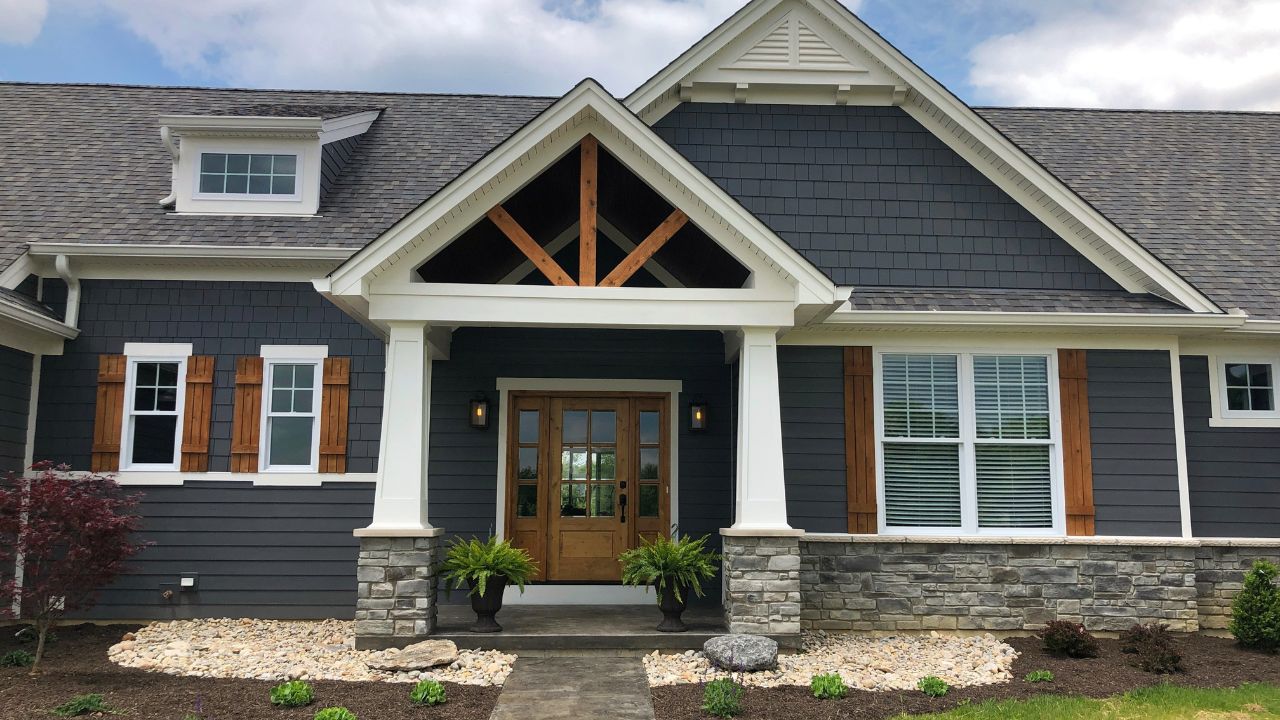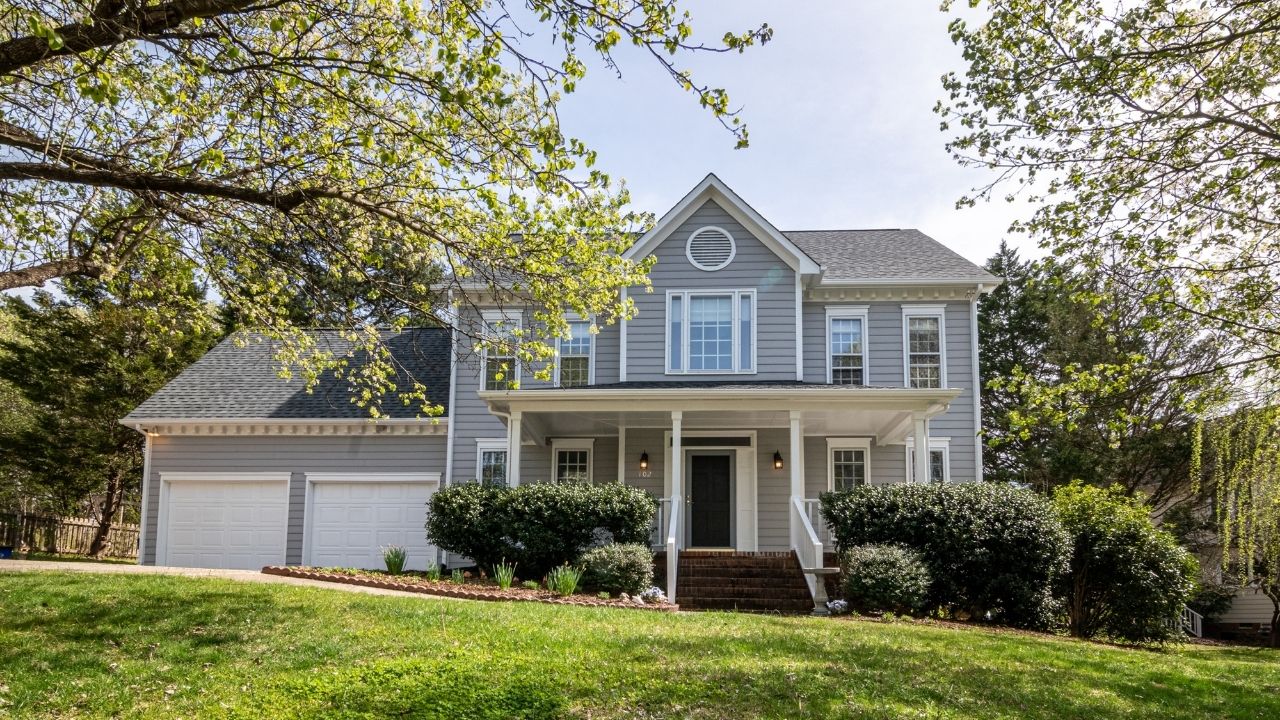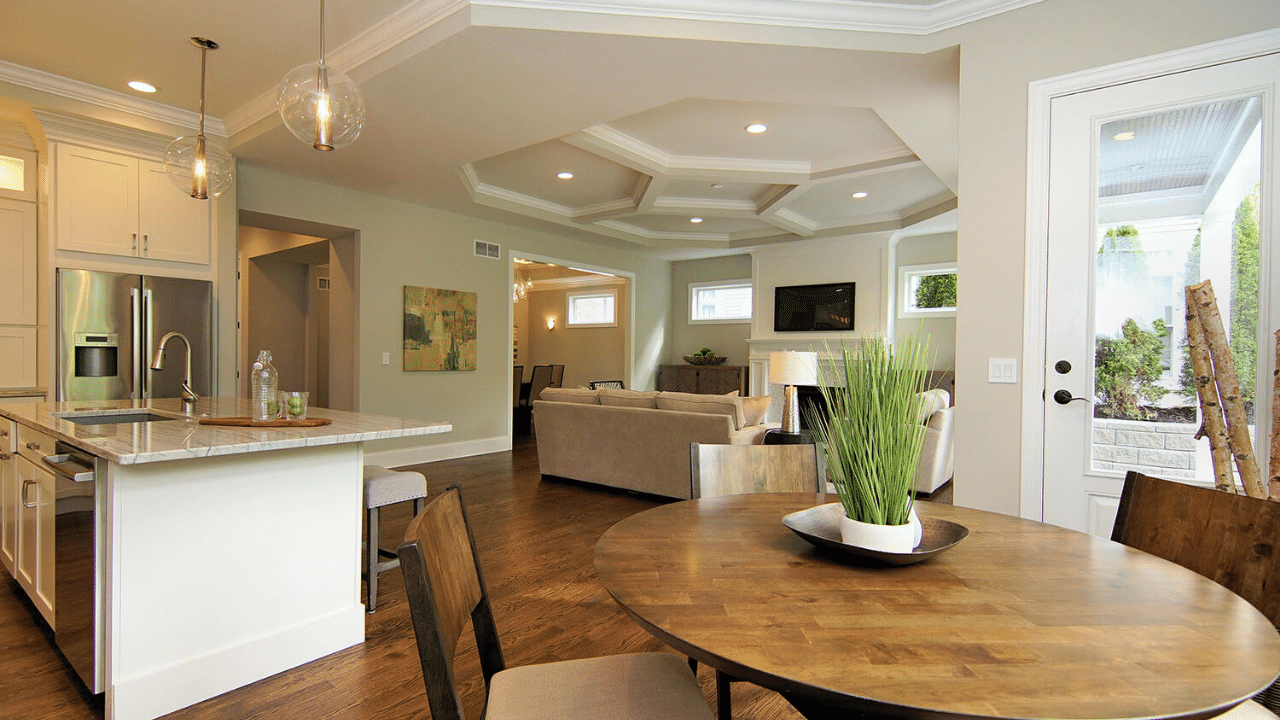8 Questions to Ask Before Building Your Custom Home in Cincinnati
Before you break ground on your custom home, there are some questions you should ask yourself to make sure you are getting the most out of your new...

Only ten states in the U.S. produce all of the country’s greenhouse gas emissions. Unfortunately, Ohio is one of the ten. The good news? Most of Ohio’s residents care about the state’s emissions and are motivated to do something to change course. And, with homes being responsible for 20% of emissions, this offers a big opportunity for Ohio residents, like yourself, to be part of the change with a Net-Zero custom home.
How? You can make a big difference in not only carbon emissions but your utility bills when you choose to design your home to achieve Net-Zero status. This goes beyond building for energy efficiency or green building. So, what is Net-Zero and how can your custom home be designed to use zero energy?
Put simply, a Net Zero home produces as much, or more, energy than it will use on an annual basis. Even if your home does take energy from the grid from time to time, as long as it returns the energy other times and results in zero use over the course of a year, your home will be considered Net-Zero.
Net-Zero homes will, of course, save you incredible amounts on energy costs, but there are other benefits to having a Net-Zero home. Your energy-efficient home will include high-performance windows and insulation, superior appliances and HVAC system, and other energy-saving features. All of these elements will result in more comfort, fewer drafts, and healthier indoor air.
Adding alternative energy sources to your home is only one component of many in making your home a Net-Zero home. Every part that goes into the design and construction of your home will play a part. It starts with energy conservation, being mindful of passive solar energy via design, and finally, producing your own energy.
You’re likely already aware of some of the ways you and your family can conserve energy in your home through better habits, but much of your home’s design will do the heavy lifting in conserving energy.
Energy use reduction starts with a tight building envelope. This includes every part of the home where heat and air could pass through, like the roof, windows, doors, and floor. A tightly sealed home will allow for as few air changes per hour as possible, which is one metric for determining if your home can qualify for Net-Zero certification. An average home will experience 4.4 changes per hour, but a Net-Zero home will have only 0.5 changes, which is measured using the blower door test.
To further reduce energy use, your builder may suggest a heat pump, a tankless water heater, energy-efficient appliances, and energy-efficient light fixtures with LED bulbs.
When your home is designed with its orientation to the sun in mind, this can make a big difference in the amount of energy your home uses. Taking every opportunity to use natural light can go a long way. When your home is built to face the south, your home will receive the most natural light throughout the day, so it’s important to consider how many and how large your windows are on that side of the home.
To absorb more warmth from the sun during colder months, ask your builder about using concrete panels on your home. It’s a more contemporary design material, but brick and stone will also absorb heat if that’s more in line with your style. Also, consider your window coverings. Louvered awnings can do a lot to prevent too much of the sun’s heat from entering your home when you don’t want or need it, reducing energy from having to keep your house cool.
After your home is designed to reduce its energy use and to mitigate or take advantage of the sun’s heat and light, it’s time to assess how your home can produce its own energy. For homes, this usually means installing a solar power system. Solar panels along with a battery to store the electricity they produce will be your home’s main power source.
The size of the solar power system your home will need to be Net-Zero will depend on its size, your energy usage, and your home’s location. This is where an energy consultant comes into play. Solar panel companies are also a good source for calculating the size system you’ll need to cover all of your energy needs. To make the most of your solar panels, a south-facing home will enable the broad side of your roof to receive the most sun and will be where your panels are installed.
In short, no. Your home’s energy efficiency will benefit you and your family regardless of whether your home is certified or not. However, if you think you may put your home on the market in the coming years, a Net-Zero certification will increase its value. More and more homebuyers are looking for homes that are certified or are Net-Zero ready, which means that a home has been built to become Net-Zero with additional investments like solar panels.
If you are interested in getting your home Net-Zero certified, your home will need to go through certain tests. There are two energy-efficiency rating systems that are most common in the U.S., which are the Home Energy Rating System (HERS) and the Energy Performance Score (EPS).
The HERS index will use a blower door test, a duct leakage tester, and a visual inspection. The amount of leakage from your home’s envelope, via the HVAC system and the effectiveness of the home’s insulation. An initial HERS score will be estimated from the plans, followed by at least two on-site visits during construction, and once more when construction is complete.
This test determines the home’s energy use. The score ranges from 0-200, with zero being the best rating. The score considers the home’s size, estimates total carbon emissions, and uses computer modeling and visits by an inspector.
If your home is determined to be Net-Zero certified, this doesn’t exactly mean that your home won’t consume any energy from the grid. This is because the rating systems can’t determine just how much energy your family will use. It’s based on a comparison to a reference home of the same size and style, which isn’t always a perfect comparison because it can’t account for extenuating circumstances.
If you install equipment after your home is built that will take more energy to run, like the energy used for a pool, electric vehicle charging stations, or additional entertainment equipment, the initial tests can’t account for this and your home will likely have to draw electricity from the grid. This is why it’s best to plan ahead for these possibilities by installing a larger solar power system than your home currently needs.
Because you may end up using more electricity down the road, it’s important to run post-occupancy tests periodically and adjust for the results. This could mean reassessing your family’s habits, installing more solar panels, or possibly both.
The team you hire for your custom home will play a big role in your home’s energy efficiency and its potential for a Net-Zero certification. Your home’s energy use starts with a tight envelope, and the team you hire should be able to deliver just that. Knowledge about the best energy-efficient windows and doors, proper insulation, and other factors is important if your goal is to have a certified Net-Zero home.
Chris Gorman Homes cares about energy efficiency and knows how to achieve it. We know that every component that goes into your custom home will determine how well it performs. If you’re ready to have a custom home that will save energy and reduce carbon emissions, contact Chris Gorman Homes to schedule a consultation today.

Before you break ground on your custom home, there are some questions you should ask yourself to make sure you are getting the most out of your new...

Photo by Marcelle Guilbeau, Interior Designer - Look for pool pictures

Building a custom home in Cincinnati requires a significant time commitment to create a one-of-a-kind house that is tailored to your specific tastes...